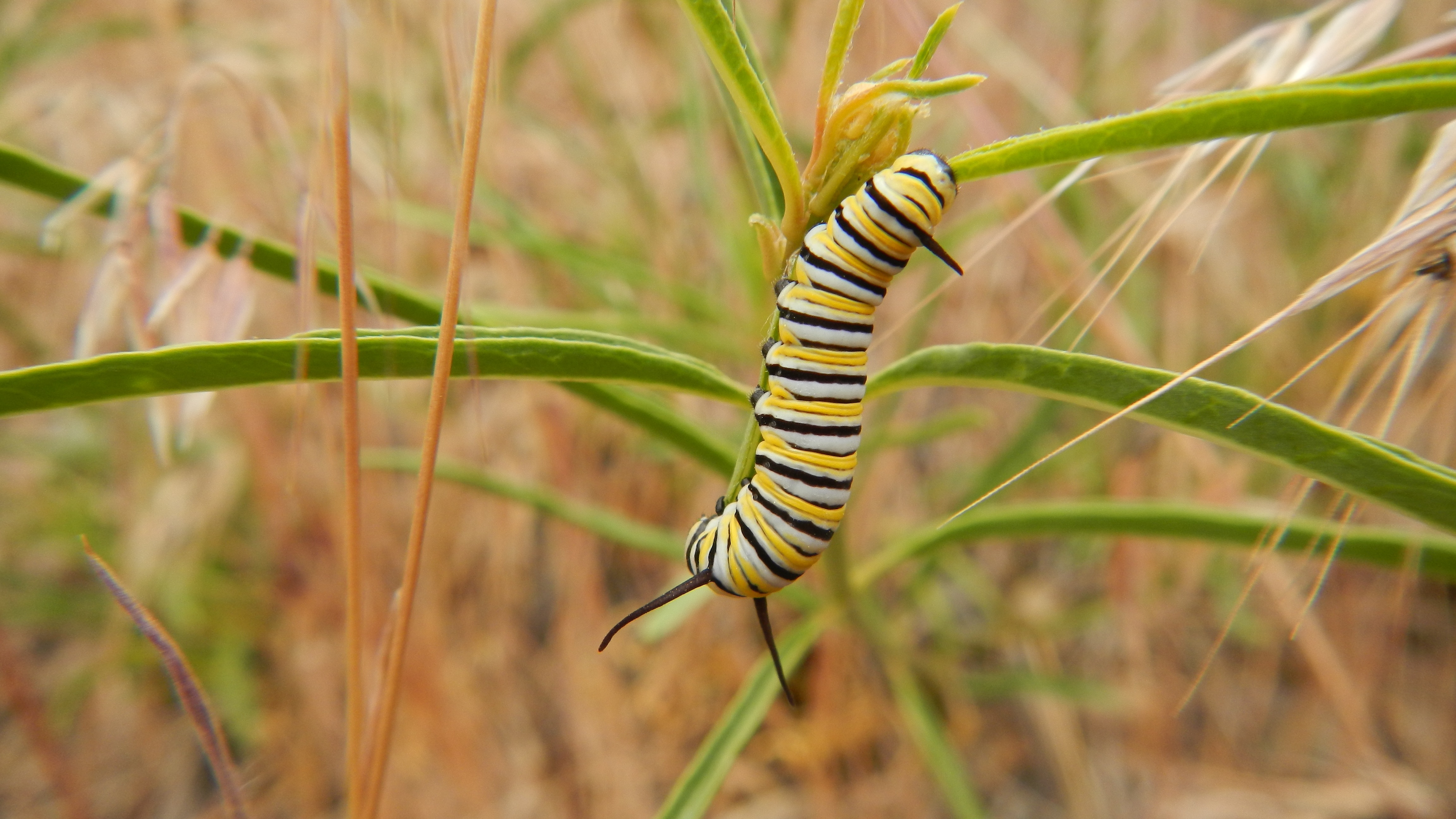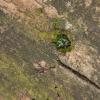On a hot, bright day last June, two graduate students from the University of Nevada, Reno, joined up with Xerces staff to collect milkweed samples from California’s Central Valley. The Central Valley is critical breeding habitat for migrating western monarchs. Over the last century, the landscape has transformed from a profusion of wildflowers and marshlands, to farmland and rapidly growing cities. The dwindling western monarch population now relies on fragmented habitat to reproduce, including remnant natural areas, planted habitat on farms, and urban spaces.
Narrow-leaf milkweed (Asclepias fasicularis) growing beside a tomato field. (Photo: Xerces Society / Kitty Bolte.)
While research has linked pesticide use in the region with monarch declines, no one had taken the next step to quantify the extent of pesticide contamination in butterfly habitat. So, starting on that hot June day, our team proceeded to collect 227 milkweed leaf samples from agricultural field edges, wildlife refuges, and urban spaces. We also purchased milkweed from two retail nurseries to get a sense of what might be on plants that people buy. Our samples were analyzed at a lab for the presence of various pesticides (including insecticides, fungicides, and herbicides). We targeted milkweed because it is the sole food source for monarch caterpillars in western states, and thus vitally important for their survival.
Our findings, published in the journal Frontiers in Ecology and Evolution, paint a harsh picture for western monarchs—every sample we collected was contaminated with at least one pesticide and most were contaminated with multiple pesticides. A total of sixty-four different pesticides were found across the samples, with an average of nine pesticides per sample. Samples from agricultural areas and retail nurseries generally had more residues than those from wildlife refuges and urban locations. Some pesticides appeared in almost all samples: Five were found in more than 80 percent of our samples. The two most commonly found were the insecticides chlorantraniliprole and methoxyfenozide, which were in 91 percent and 96 percent of our samples, respectively.
 Milkweed is essential for monarch caterpillars. Newly published research shows that pesticide contamination of plants is widespread in California's Central Valley. (Photo: Xerces Society / Stephanie McKnight.)
Milkweed is essential for monarch caterpillars. Newly published research shows that pesticide contamination of plants is widespread in California's Central Valley. (Photo: Xerces Society / Stephanie McKnight.)
What is the significance of this extensive contamination? Were the chemicals found at “toxicologically relevant levels”, levels that could harm monarch caterpillars? Research on how pesticides impact butterflies is surprisingly limited. We were able to find toxicity data relating to butterflies and moths (Lepidoptera) for sixteen of the sixty-four pesticides in our samples. Toxicity data specifically for monarchs was even sparser; it was available for only four of the pesticides we found. The toxicity of a pesticide is assessed by measuring the quantity that kills 50 percent of a test population, a figure known as LD50. Forty-seven percent of our samples contained one or more of the sixteen pesticides at a level above the known LD50 for butterflies and moths. In 32 percent of our samples, the known LD50 levels for monarchs were exceeded. With toxicity data available for only a quarter of the pesticides detected, we still don’t understand the full extent of potential impacts from the residues we found. Still, even the incomplete picture suggests that in California’s Central Valley, pesticides could be a contributing factor in monarch declines.
While our findings were troubling, the outpouring of support in response has been phenomenal. Farmers, home gardeners, government agency staff, and others all want to play a role to protect monarchs. And the momentum isn’t contained in California; interest is nationwide. Xerces is already working with growers to increase habitat and reduce pesticide use. We also are helping home gardeners source pollinator-attractive plants grown with ecologically sound methods.
A year ago, we couldn’t have known what would come from our sampling project. Yet, our findings have already proved invaluable in planning conservation actions. Thank you for being a part of Xerces’ family, with special thanks to Linda Raynolds. Together, we are helping protect pollinator habitat from pesticides.
Showy milkweed (Asclepias speciosa) growing on a roadside. As more land has been converted to farmland or cities, marginal areas have become increasingly important for the survival of monarch butterflies. (Photo: Xerces Society / Angela Laws.)
Further Reading
Read the study published in Frontiers in Ecology and Evolution (open access)
Find Xerces Society resources on western monarch conservation
Learn more about how you can reduce pesticide use
Information about creating pollinator habitat in California



